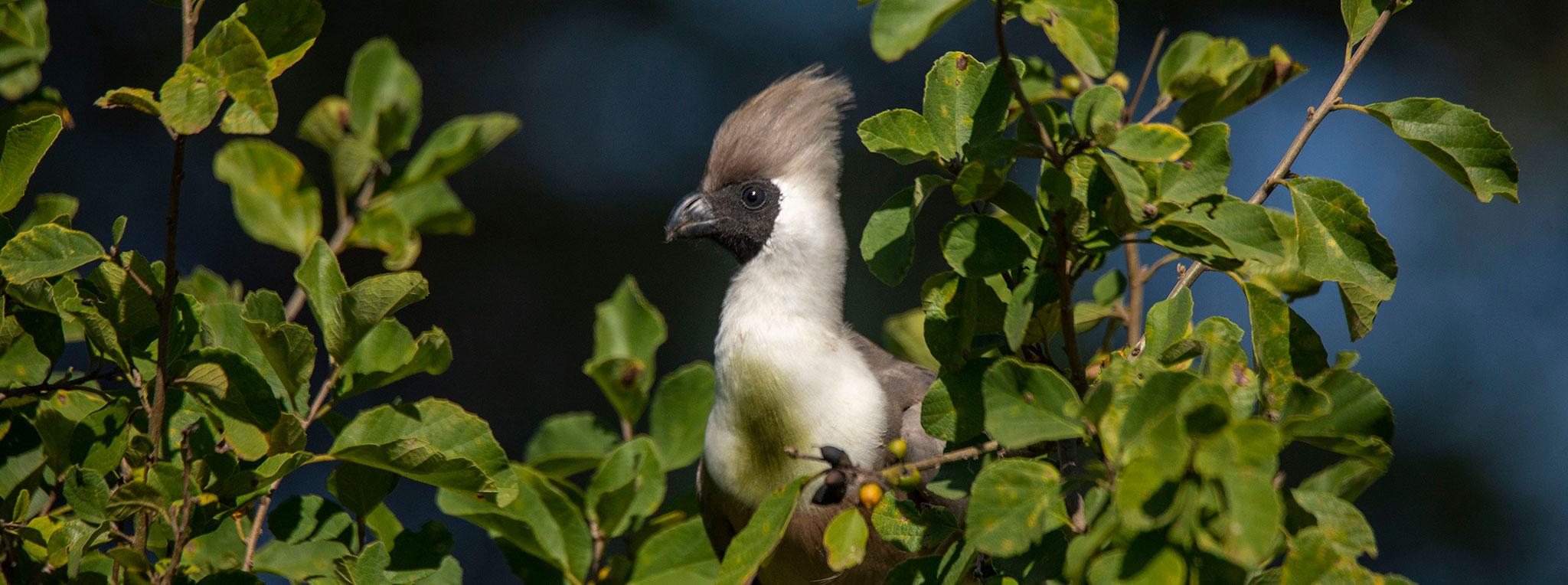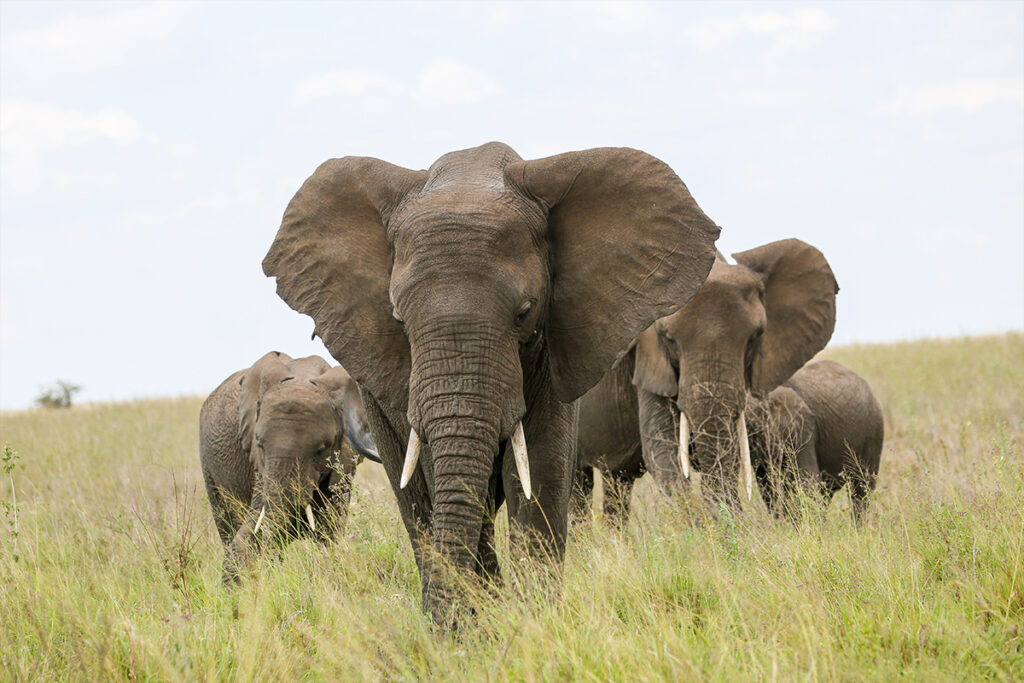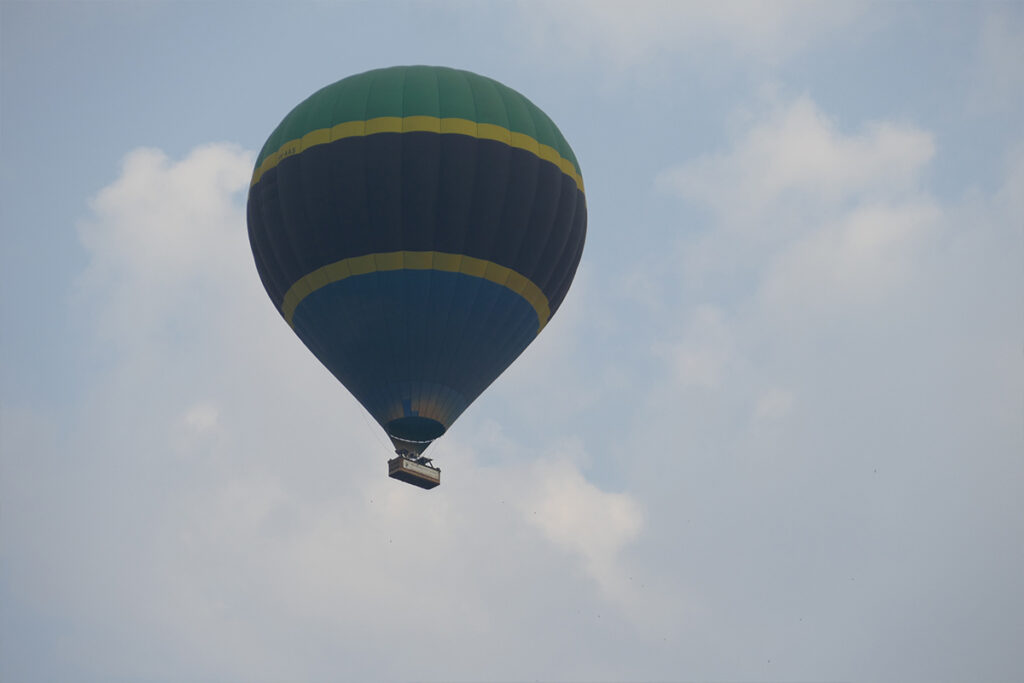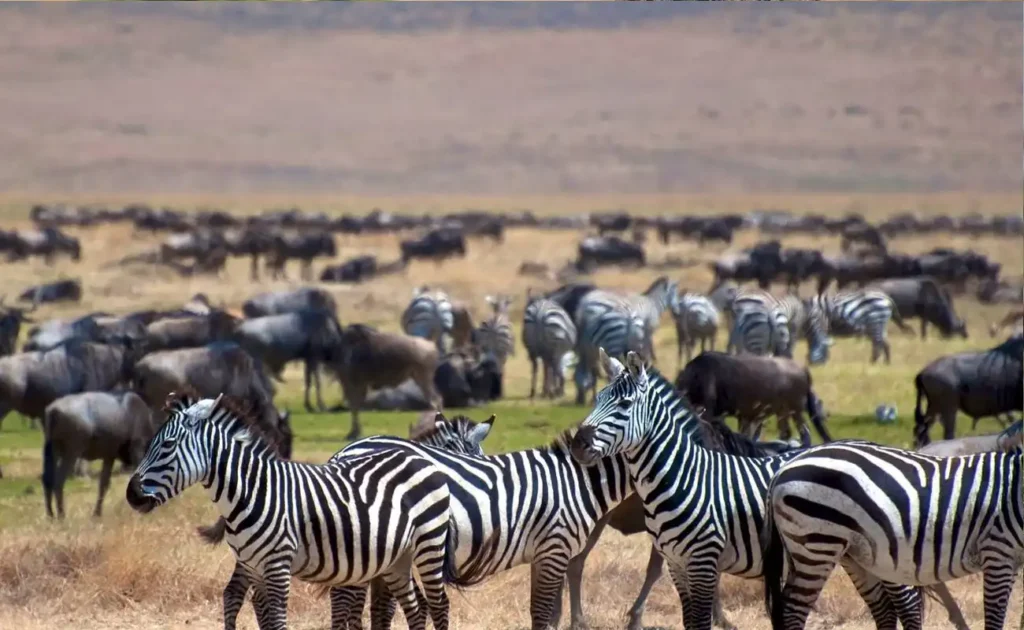With over a thousand species of birds thriving in its diverse ecosystems, Tanzania is an ornithologist’s paradise. The country’s vast array of wildlife-rich habitats, ranging from the lush wetlands of Selous to the grasslands of the Serengeti, presents unparalleled opportunities for birdwatching. Enthusiasts can witness rare and endemic bird species paint the skies with a medley of colors and calls.
The history of birdwatching in Tanzania is as rich as its landscapes, with ornithologists from around the globe flocking to explore its avian diversity. According to recent statistics, Tanzania hosts approximately a third of the total known bird species in Africa. Whether it’s the elusive Fischer’s Lovebird or the majestic African Fish Eagle, these safaris offer both seasoned and novice birdwatchers an exhilarating experience.

Tanzania Birdwatching Safari
Tanzania is a leading destination for birdwatchers, offering a stunning array of habitats and species. The country’s diverse ecosystems attract countless bird enthusiasts each year. From the wetlands of Lake Victoria to the forested slopes of Mount Kilimanjaro, Tanzania’s landscapes are home to over a thousand bird species. This makes it a paradise for ornithologists and nature lovers alike. Additionally, guided safaris provide an immersive way to experience this avian wonderland.
One highlight of a Tanzania birdwatching safari is the opportunity to see unique and rare birds. The endemic Grey-breasted Spurfowl and the Fisher’s Lovebird are just a couple of examples. Birdwatchers can also spot migratory species that come from as far as Europe and Asia. This creates an ever-changing, dynamic birdwatching experience throughout the year. According to this post, new safari trends are making these experiences even more thrilling.
Planning your birdwatching safari involves choosing the right time to visit. While Tanzania has something to offer year-round, certain seasons are better for spotting specific species. The wet season from November to May is particularly great for seeing migratory birds. During this time, the landscape is lush and vibrant. Birdwatchers can witness the birds in their natural resting and breeding habitats.
If you are thinking about where to stay, Tanzania offers various accommodations close to prime birdwatching spots. Many luxuriously equipped campsites and lodges are located within or near national parks and reserves. For instance, here is the article about fancy tents in Tanzania that bring you closer to nature. These options allow you to wake up to the sounds of birds singing just outside your tent, offering an unforgettable experience.
What Makes Tanzania an Ideal Birdwatching Destination
Tanzania’s vast landscape is like a canvas painted with diverse habitats that support an incredible variety of birds. This African nation boasts everything from coastal mangroves to savanna grasslands. Such variety makes it a top spot for bird lovers. Birds like the Lilac-breasted Roller and the African Fish Eagle thrive in these diverse settings. Each habitat attracts different species, making birdwatching in Tanzania a unique adventure.
Another reason Tanzania stands out is its protected national parks and reserves. Places like the Serengeti and Ngorongoro Crater offer safe havens for birds. Visitors can explore these areas without disturbing the wildlife. These protected zones maintain the ecological balance needed for birds to flourish. This commitment to conservation enhances the birdwatching experience.
One of the highlights of birdwatching in Tanzania is seeing both rare endemic species and migratory birds. The country’s location on the migratory flyway allows a spectacular variety of birds to be spotted. During certain times of the year, you can see species migrating from as far as Europe. This ongoing avian journey offers an ever-changing experience. Birdwatchers never know what they’ll spot next, keeping every trip exciting.
The hospitality and expertise available also elevate Tanzania’s birdwatching to a higher level. Knowledgeable guides lead tours through the most bird-rich areas. These guides can identify calls and behaviors that might be missed otherwise. Additionally, comfortable lodgings are conveniently located near prime birdwatching spots. This blend of skilled guiding and accommodation ensures a rewarding adventure.
Exploring the Bird Species in Tanzania
Tanzania is home to over 1,000 bird species, offering a delightful range for any bird enthusiast. The country’s diverse environments, from lakes to forests, host incredible birdlife. One unique species to look out for is the Kori Bustard, Africa’s heaviest flying bird. Tanzania also shelters many brightly colored birds like the Beautiful Sunbird. Each region of Tanzania offers sightings of different avian wonders.
In the wetlands, you can spot the striking Pink-backed Pelican gliding gracefully over water. Lake Manyara holds a high density of flamingos that paint the lakes pink. These birds are often seen in large, synchronized flocks. Swamps and marshes harbor countless other water-loving birds. This makes them perfect spots for waterbird photography.
The forests of Tanzania thrive with vibrant songbirds and elusive forest dwellers. Here, the Usambara Eagle-Owl can be spotted perched high in trees. These forests are also home to the enchanting African Emerald Cuckoo. Tanzania’s woodlands are dense and echo with melodious bird calls. This creates a beautiful symphony for animal lovers.
As you explore Tanzania, keep an eye out for the dazzling lilac-breasted rollers. These birds light up the savannas with their brilliant hues. They are often seen performing acrobatic displays during flight. This species alone demonstrates the vivid beauty found in Tanzania. Birdwatchers will enjoy every moment spent in this avian paradise.
Best Time to Visit Tanzania for Birdwatching
The best time to visit Tanzania for birdwatching largely depends on what you want to see. If migratory birds are your focus, the wet season from November to April is ideal. During this period, the landscape becomes lush, attracting a variety of migratory species. Multiple bird species from Europe and Asia stop here to rest and refuel. This makes it a prime time for birdwatching safaris.
The dry season, from June to October, also has its perks for bird enthusiasts. Resident birds are more concentrated around water sources during this time. This offers a different yet equally rewarding viewing experience. Wildlife spotting, including birds, becomes more predictable and easier. Clear skies and dry paths make it a comfortable time for traveling and exploring.
Depending on your specific interests, some months stand out more than others. January and February are fantastic for watching migratory shorebirds. Conversely, December is best for woodland species as they are active and easily visible. The variations in bird activity create unique experiences every month. This ensures that whenever you visit, there’s always something new to discover.
Planning your trip around birdwatching festivals can add an extra dimension to your adventure. Events like the Serengeti Bird Festival in November bring bird lovers together to celebrate avian life. These festivals often include guided tours, bird counts, and photo contests. They provide a great way to meet like-minded enthusiasts. Additionally, local experts often share their knowledge, enriching your overall experience.
The Impact of Birdwatching on Tanzania’s Conservation Efforts
Birdwatching has become a significant force in Tanzania’s conservation efforts. As more tourists flock to see the country’s avian diversity, they also support economic growth. This boost encourages the government and local communities to protect natural habitats. By preserving these areas, both residents and migratory birds benefit. Overall, birdwatching promotes a sustainable approach to wildlife and habitat conservation.
Tourism dollars generated from birdwatchers trickle down to local communities. This money often funds essential services and infrastructure. Many villages near birdwatching hotspots have seen improvements in schools and healthcare. As a result, locals are more inclined to engage in conservation activities. Knowing their well-being is linked to preserving their surroundings motivates them for long-term protection.
Birdwatching also aids in educating both locals and tourists about the importance of biodiversity. Many tours include talks about the various bird species and their roles in the ecosystem. Educated tourists become ambassadors for conservation. They often share their experiences, raising awareness about these issues globally. Understanding the importance of each species helps foster greater respect and care for fragile ecosystems.
Collaborations among organizations play a crucial role in conservation. Partnerships between government agencies, NGOs, and local communities foster unified efforts in bird protection. These collaborations often lead to research programs and sustainable development initiatives. With united efforts, birdwatching transforms from a mere hobby into a powerful conservation tool. The shared goal of preserving Tanzania’s natural beauty drives all involved forward.
Birdwatching festivals also contribute to increasing conservation awareness. These events spotlight the importance of preserving avian habitats. Festivals offer workshops and activities that educate attendees. Visitors leave with a better understanding of how they can aid conservation. By highlighting these challenges, festivals strengthen collective conservation efforts.
Tips for Planning a Successful Birdwatching Safari in Tanzania
Planning a birdwatching safari in Tanzania can be an exciting adventure. Choosing the right season is crucial. The wet season is ideal for spotting migratory birds, while the dry season offers easier travel and clear skies. Make sure to research which species are active during your planned visit. This will help maximize your birdwatching opportunities.
Selecting experienced guides is another key aspect of a successful safari. Knowledgeable guides can identify bird calls and behaviors, enhancing your experience. They know the best spots and times to find rare species. Trusting a local guide can lead to discovering hidden gems. Always read reviews or get recommendations when picking a tour guide.
As for gear, having the right equipment is essential for birdwatching. Bring a good pair of binoculars for clear, close-up views. A field guide will help you identify different species. Comfortable clothing suitable for outdoor activities can make your safari more enjoyable. Don’t forget a camera to capture memorable moments.
Accommodations matter when planning your trip. Choose lodgings close to bird-rich areas like national parks and wetlands. Check if your chosen lodging offers guided birdwatching tours. This can add convenience and enhance your overall experience. Staying near birdwatching hotspots minimizes travel time and increases the chances of sightings.
Lastly, be mindful of local conservation efforts. Respect the wildlife and habitats you visit. Follow guidelines provided by your guides and accommodations. Avoid disturbing the birds, especially during nesting seasons. Contributing to local conservation initiatives can ensure these beautiful environments remain preserved for future generations.

Frequently Asked Questions
Birdwatching in Tanzania offers a unique and exciting experience. Here are some common questions and their answers to help you plan your trip better.
1. What are the best regions in Tanzania for birdwatching?
The best regions for birdwatching in Tanzania include Serengeti, Ngorongoro Crater, and Lake Manyara. The Serengeti is famous for its vast savannas and diverse bird species. Ngorongoro Crater, with its unique geological formations, hosts various habitats ideal for different bird species. Lake Manyara is well-known for its large flocks of flamingos and diverse water birds.
Each region offers unique birdwatching opportunities, from savannas to wetlands. Visitors can view a wide variety of birds in each location, making them top choices among ornithologists. These regions are often included in guided tours to maximize birdwatching experiences. Research and choose the areas that best match your interests.
2. Is birdwatching popular among tourists in Tanzania?
Yes, birdwatching is highly popular among tourists visiting Tanzania. The country attracts many birdwatchers each year due to its diverse bird habitats and species. Birdwatching safaris offer tourists a chance to see rare and endemic birds, making it a significant attraction.
Tourists from all over the world visit Tanzania for its unparalleled birdwatching opportunities. The popularity of birdwatching has also boosted local conservation efforts. The increased influx of birdwatchers supports the economy and helps protect natural habitats.
3. What equipment do I need for a birdwatching safari in Tanzania?
For a birdwatching safari in Tanzania, essential equipment includes a good pair of binoculars and a field guide. Binoculars will help you spot distant birds clearly, while a guidebook will aid in identifying various species. Comfortable clothing, a hat for sun protection, and a camera are also recommended.
Having the right gear enhances your birdwatching experience. Don’t forget to pack a notebook to jot down observations. These tools are crucial for making your safari enjoyable and productive. Proper preparation ensures you maximize your birdwatching opportunities in Tanzania.
4. When is the best time of year for birdwatching in Tanzania?
The best time for birdwatching in Tanzania is from November to April, during the wet season. This period is ideal for spotting migratory birds that flock to Tanzania’s lush habitats. However, the dry season from June to October is also excellent for resident bird species. Each season offers unique birdwatching experiences.
Timing your visit correctly ensures you see the most bird species. Wet season landscapes are vibrant and host migratory birds, while the dry season offers easy travel conditions. Make sure to plan according to your interest in either migratory or resident birds. Both seasons provide unforgettable birdwatching opportunities.
5. How do birdwatching safaris in Tanzania support conservation efforts?
Birdwatching safaris in Tanzania support conservation efforts by funding local and national conservation projects. The tourism revenue generated helps protect natural habitats and endangered bird species. Guides and tour operators also educate visitors on the importance of conservation.
Tourists contribute directly to these efforts through park fees and sustainable tourism practices. The increased awareness among visitors helps advocate for bird and habitat protection. These conservation-focused safaris ensure that Tanzania’s rich biodiversity remains intact for future generations.



